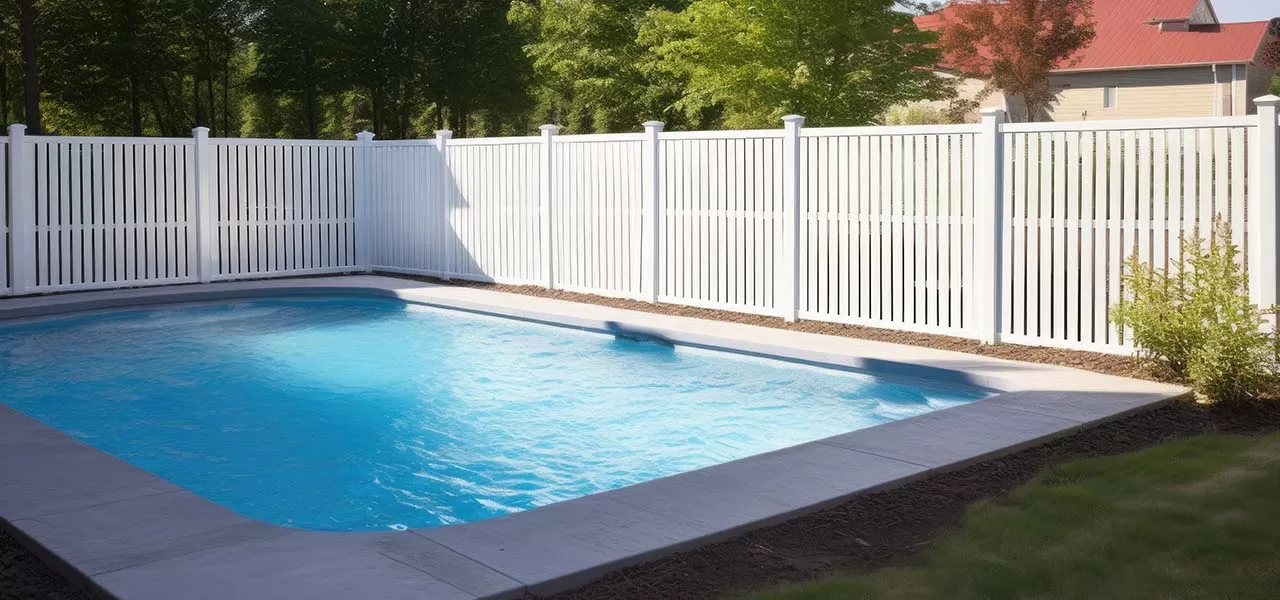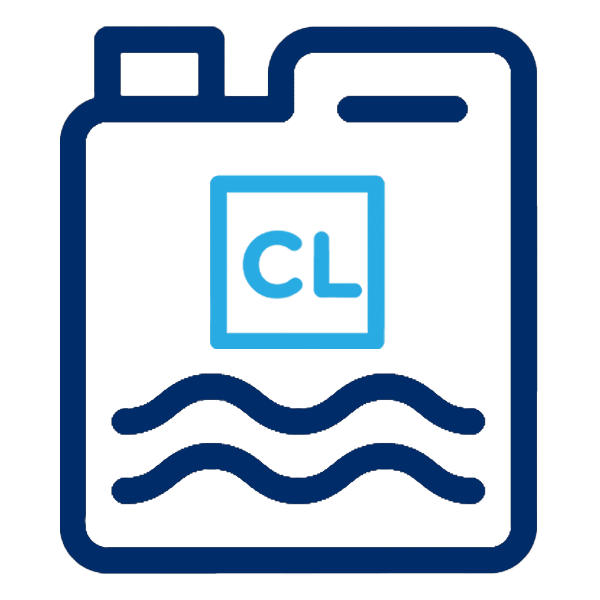FREE Standard Shipping On All Orders $100 or More!*

5 Ways to Destroy a Vinyl Pool Liner
A beautiful new inground liner - nothing matches the soft feel and bright luster of a vinyl-lined pool. If you've recently installed one of our inground pool kits, or replaced your inground pool liner, you want to protect the investment and put off a reinvestment for as long as possible.
Vinyl pool liners, though durable, can be susceptible to damage if not handled with care. Understanding these potential pitfalls is crucial for maintaining a healthy and long-lasting vinyl pool liner. Here's how to keep your vinyl liner looking new, by avoiding these 5 common mistakes made with vinyl liners.

Bleaching
Pool liners are much more resistant to fading from high chlorine levels than they used to be. Nonetheless, even if the color stays intact, continuous high chlorine level is corrosive, and affects the plasticity of the vinyl by slowly pulling the resins from the material. To avoid chemical damage from chlorine, follow these tips.
- Always pre-dissolve pool shock in a bucket of water, stirring to mix, and then slowly pour around the edge of the pool.
- Shock the pool only as needed. If you are having no water issues, shocking every 4-6 weeks could be appropriate.
- Use a Mineral Sanitizer, such as Nature2 or Frog, to reduce the amount of chlorine needed daily. You can go as low as 0.5 ppm.
- Do not use chlorine floaters, in summer or winter, which may come to rest on the vinyl, or tip over and spill it's contents.
- Do not put tablets in the skimmer. If you use chlorine tablets, use a chlorine feeder, installed by your pool equipment.
Leaking

The mistake here is not finding and fixing leaks as they occur. Leaking water can rust steel pool walls or erode sand pool floors. It's also a waste of treated and heated pool water. It could cause your pump to lose prime and overheat, if too much air is sucked into the skimmer. In most cases, leaking pools do not damage the pool liner, except when the pool leaks to a low point, during winter perhaps, exposing the liner to the elements.
If a vinyl liner pool leaks below the shallow end floor, the liner can relax and pull away from the walls. For older pool liners, this can stress the liner and possibly rip or tear the vinyl when it is reset. For newer liners with some stretch left, this can create wrinkles when the pool is refilled.
In most cases, leaks in a vinyl pool can be found easily if the water stabilizes at one certain level. When it seems to keep going, you may need to put on a mask and inspect the deeper areas of the pool. A dye syringe can be used to dye test suspected areas for leaking. Leaks in vinyl pools are patched with an underwater vinyl patch kit.
Most vinyl pool owners do not have a problem with leaks in the vinyl liner per se. In fact, it's more common to leak in other areas than it is to leak through a rip or hole in the vinyl. Areas like the skimmer, returns, drains, steps and pool lights. Any place where the liner was purposely cut, and then sealed with gaskets and faceplates, could be suspect during a leak investigation. The pool light conduit, which houses the wire from the pool light to the junction box, could be another prime suspect to bring in for questioning.
Low pH
Below the pH neutral level of 7.0, pool water becomes acidic and corrosive to vinyl. Over time, this can suck out the plasticizers and resins that keeps vinyl pliable. Over more time, a liner in a low pH "acid bath" will become brittle, fade in color and eventually begin to literally fall apart. This mistake can be avoided however - just test your pH weekly and make adjustments to keep your pH in the range of 7.2-7.6.
Constantly low pH? Not uncommon in a vinyl pool; this is due to the low pH of chlorine tablets, or low pH of nearby plants and trees which end up in the pool. In urban areas, acid rain or pollutants washed out of the sky will also contribute to a constant need for pH increaser. If you are having trouble raising the pH level, check your Total Alkalinity level. A minimum of 80 ppm is recommended as a buffer for your pH level; and will help stabilize your pH level.
Another LOW problem is with low Calcium Hardness levels. Some think that low calcium is only a problem for concrete pools, but on the contrary, low hardness levels (below 150 ppm) can harm vinyl liners too. When water is too soft, add Calcium Hardness Increaser (leftovers can be used as snow melt during winter).
Animals

Dogs can swim in a vinyl liner pool; they just need to know where the steps are to exit - they can't climb a pool ladder. Pet Steps provide an exit strategy for pools without entrance steps.
Many people are concerned that a dog's claws will shred the pool liner. Dogs are OK in a vinyl liner pool.
Wild animals, however, could be a concern to a vinyl pool owner. Raccoons and larger animals with sharp claws could damage the edge, but it's rare that they get close enough to a pool to fall in. A larger concern would be large animals that get spooked and run into the pool. Deer, farm animals, Moose - have large claws that could damage the vinyl on the floor.
Humans

Humans - the original party animal. How about the kids using the sharp end of the pool pole to pole vault across the pool? Or the guy that got thrown in the pool, in his golf cleats. Melting the liner with a blow dryer? How about a broken glass in the pool being dragged around by the pool cleaner. Or my favorite, fireworks on the fourth of July, a bit too close to the pool, sparks melting tiny holes in the vinyl.
Be careful of sharp and hot implements around a vinyl pool. Inspect your cleaning tools and pool cleaner for sharp edges. And enforce a strict rule of no golf cleats, hair dryers, glass or fireworks within 50 feet of a vinyl liner pool!